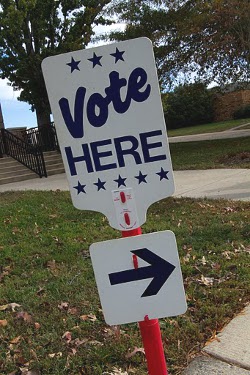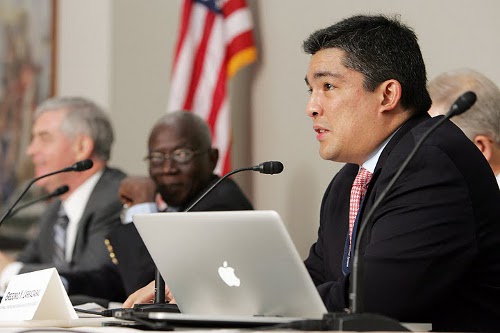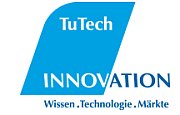|
|
E-Voting, change management and the US elections: PEP-NET chats to Manuel Kripp, MD of E-Voting.cc18. November 2010 – 10:32 by John Heaven (TuTech Innovation GmbH) |

Manuel Kripp, MD of E-Voting.cc
Manuel Kripp, Managing Director of PEP-NET member E-Voting.cc, recently visited the US during the mid-term elections, so I was very curious to find out what he had got up to. We spoke about electronic voting machines, the role of social media in the US elections, and the need for change management when introducing E-Voting technology.
To find out what E-Voting.cc does, see their website or my previous interview with Manuel’s predecessor Robert Krimmer.
John Heaven: Hi Manuel. I hear you’ve been travelling recently. What were you up to?
Manuel Kripp: I was invited to participate in the 2010 U.S. election program organised by the International Foundation for Electoral Systems (IFES), and by the the Electoral Assistance Commission (EAC) to observe the election on Tuesday 2nd November.
The conference was well attended by experts from around the world, including Thomas Wilkie (Chief Executive, IFAS), Doug Chapin (Pew Centre on the States), and Bob Carey (Federal Voting Assistance Program). The Jo C. Baxter prize was presented to Dr Kwadwo Afari-Gyan, Chairman of Ghana’s Electoral Commission, for invaluable contributions to democracy in Ghana.
The focus of my visit was on seeing how elections are conducted in other countries from around the world, and comparing the US electoral system with how things are done in Europe.

Photo courtesy Ripple Effect Productions/IFES
US electoral system
JH: So what is different about the US electoral system?
MK: Firstly, there isn’t a “US electoral system” as such: even within States there are large variations because the Counties have wide-ranging autonomy to set electoral rules and opening times, and – interestingly from an E-Voting perspective – procure the voting machines. On the latter point, the EAC certifies voting machines based on centrally determined guidelines; but even these are voluntary. So one of the Counties I was in, Arlington, used EAC non-certified voting machines.
JH: Can US citizens vote on the internet?
MK: Not over the internet – in fact the reason that voting machines in Arlington don’t meet the standards required for verification by the EAC is that they are synchronised using a wireless LAN connection before the election starts. But voters use electronic voting machines even when they choose to cast a paper vote. Before it is dropped into the ballot box, the ballot paper is scanned and stored electronically. The advantage of this is that you get much quicker and more reliable results. Because paper ballot papers exist, you can verify the result if something goes wrong. They also have the option to use a touchscreen machine, which I tested out and found to be very convenient.
Specifically on the subject of Internet voting, there have been around seven tests and pilots of Internet voting during this midterm election.
JH: Are there other advantages of using electronic voting machines?
Philippine Case Study
MK: For accessibility reasons, they can have advantages – such as magnifying the ballot paper, or reading it out. But one really impressive example that I found out about was in the Philippines. There they adopted the optical scanner practically overnight. They told me that in the previous election, a small number of election officials were shot dead in attempts to manipulate the result. This time, no-one was shot because – although election officials were still threatened – the automatic counting means there is no prospect of affecting the outcome.
This case study was interesting for other reasons too. I always say that change management is an increasingly important part of introducing E-Voting, and they really took that to heart.
Change Management and E-Voting
JH: Change management? If change management is the answer, does that mean that the only barrier to introducing E-Voting is public fear and resistance to change?
MK: Not quite. E-Voting technology always has room for improvement in terms of security, but we are at a point where we’ve got something we can work with. So yes, an important barrier to E-Voting is public anxiety and resistance to change.
There are two aspects to this change management: firstly, election organisers need to change the way they organise and communicate the election; secondly, trust-building measures are necessary.
On the first point, election organisers need to communicate openly and honestly about what the technology can do, and what its limitations are. Instead of waiting to get caught and then owning up, they should be clear from the outset about the vulnerabilities.
On the second point, by trust-building measures I mean engaging widely with the media, electorate, hackers, and political parties. Transparent source code (which is not the same as open source) means that the “many eyes” principle can help to iron out faults and protect against security breaches. Engaging with the media is a very important aspect too.
JH: What would you suggest?
MK: Coming back to the Philippines example: there they adopted a very business-like approach, setting themselves targets for return on investment and were very clear about what they wanted from their media campaign. They used channels that are already popular with the youth: a girl-band that won the Philippine equivalent of Popstars [a bit like the UK's Pol Idol] sang a song that described how to vote, accompanied by a dance that acted out the voting process. A Strictly Come Dancing episode saw celebrities and the public attempting to mimic the dance, judged by a juror from the Electoral Commission. Finally, there was an episode of a popular soap themed around voting, with a cameo appearance from an electoral commissioner. Inspired stuff, and a brilliant example of how it should be done!
US Election Campaigns
JH: When you were in the US, were you able to get a feeling for the differences between European election campaigns and those in US?
MK: Yes, I noticed that the campaigns are far more personal and aggressive. For example, in one election advert I saw, a single candidate was accused of being responsible for the loss of 40,000 jobs in the area. There seems to be much more of a focus on candidates rather than parties, so the party takes more of a back seat. The parties also seem much less uniform, so they are different across states. The Tea Party tried to introduce a corporate image, but the older parties vary a lot more.
Role of Social Media in US Election Campaigns
JH: And what about the role of social media. Was it as important as in the 2008 presidential election?
MK: No, there wasn’t the same kind of mobilisation – at least in a party-political sense. However, the large rally organised by the Tea Party, and the satirical demonstration that Stephen Colbert and Jon Stewart organised, were unprecedented and people I spoke to said that they hadn’t seen anything on this scale apart from rallies in memory of Martin Luther King. So there was a feeling that something unusual was happening, and that could have been due to use of social media like Facebook and Twitter which are very widespread over there.
In general, I noticed a big difference in civil society. Everyone seems to be involved in some voluntary activity or the other. This isn’t necessarily party political, but often spills over into local politics – for example, a campaign to keep a school that is under threat of being closed.
In terms of electoral process, there is a big emphasis on bipartisanship. So electoral commissions have to include representatives from the Democratic and Republican parties, and even where someone asks for assistance in casting their vote, they have to be helped by a Republican and a Democrat.
JH: Thanks for your time, that was really interesting!

At the IFES Election Program, Photo courtesy Ripple Effect Productions/IFES
Tags: change management, e-voting, e-voting.cc, inenglish, maunel kripp, members







